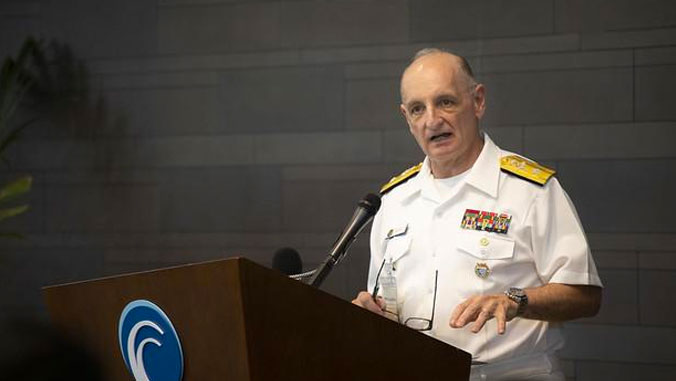
The U.S. military’s largest command is strengthening its ties with the University of Hawaiʻi to form a combined network of healthcare and environmental expertise in the Indo-Pacific region.

An August 7 kickoff session at the John A. Burns School of Medicine (JABSOM) brought out high-ranking leaders from each of the military commands. The full spectrum of military doctors were in attendance—from flight and trauma surgeons, to military pediatricians and medical professors. They were absorbed in conversations and strategy sessions with UH researchers and clinicians, as well as officials from the CDC, USAID, U.S. Senator Brian Schatz’s and Congressman Ed Case’s offices, and representatives from the embassies of nations and jurisdictions within the massive region.
Every branch of the U.S. military is active in the area, and the UH medical school has a long history of healthcare programs and capacity building in the Pacific.
“This is about all of Oceania, so it includes the U.S.-Affiliated Pacific Island (USAPI) jurisdictions that UH works with quite a lot, and also the other 22 Pacific Island countries and territories,” said Lee Bueconsejo-Lum, JABSOM director of graduate medical education and a leading cancer investigator in the USAPI. “There’s a huge burden of both chronic disease or non-communicable disease (cancer, obesity, diabetes, heart and kidney disease) and also a high burden of infectious disease. The challenge is that most of these countries have insufficient infrastructure to comprehensively address and prevent these common diseases.”
In addition to JABSOM faculty, UH was represented at the meeting by faculty from the UH Cancer Center, Center for Pacific Island Studies, Pacific Basin Telehealth Research Center, Institute for Sustainability and Resilience, School of Ocean and Earth Science and Technology, Office of Public Health Studies in the Myron B. Thompson School of Social Work, School of Nursing and Dental Hygiene, Social Science Research Institute, Daniel K. Inouye College of Pharmacy, Pacific Biosciences Research Center and UH System. The East-West Center also participated as did USAPI partners such as the Pacific Islands Primary Care Association and Pacific Island Health Officers’ Association.
See the full story, including more photos and a video, on the JABSOM website.
—By Tina Shelton

